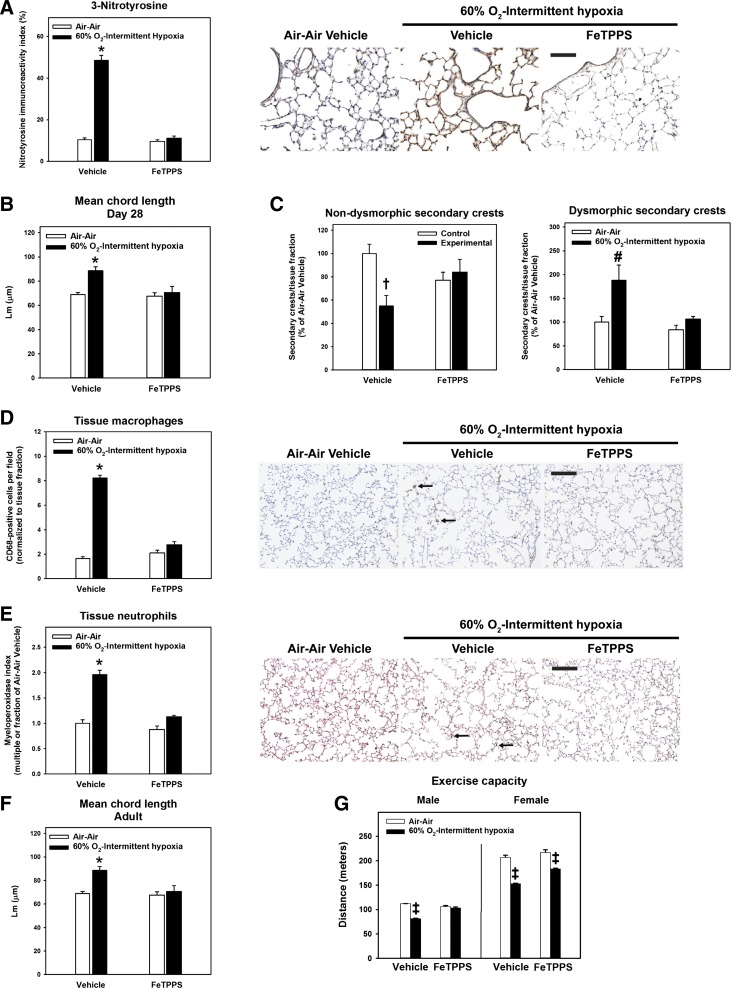Fig. 5.
Effects of treatment with 5,10,15,20-tetrakis(4-sulfonatophenyl)-21H,23H-porphyrin iron (III) chloride (FeTPPS). Rat pups were exposed to normoxia from postnatal days 1 to 28 (Control; open bars) or 60% O2 from postnatal days 1 to 14 followed by intermittent hypoxia from postnatal days 14 to 28 (Experimental; closed bars). From postnatal days 14 to 28, pups received daily injections of vehicle or 30 mg·kg−1·day−1 FeTPPS. A: 3-nitrotyrosine immunostaining index and representative photomicrographs of 3-nitrotyrosine immunohistochemistry (immunoreactive 3-nitrotyrosine shown as brown stain; bar length = 100 µm). B—E: mean chord length (B) and counts of normal/dysmorphic secondary crests (C), tissue macrophages (D), and tissue neutrophils (E) at day 28. Representative photomicrographs of CD68- or myeloperoxidase-stained sections are shown below each graph [arrows pointing to macrophages (brown) or groups of neutrophils (black); bar lengths = 100 µm]. F and G: mean chord length (F) and exercise capacity (G) in young adult animals following recovery in room air until 12 wk of life. Bars represent means ± SE for n = 5–8 animals/group. *P < 0.01, by ANOVA, compared with all other groups. #P < 0.05, by ANOVA, compared with all other groups. †P < 0.05, by ANOVA, compared with Air-Air-exposed, vehicle-treated group. ‡P < 0.05, by ANOVA, compared with all other groups for the same sex.

